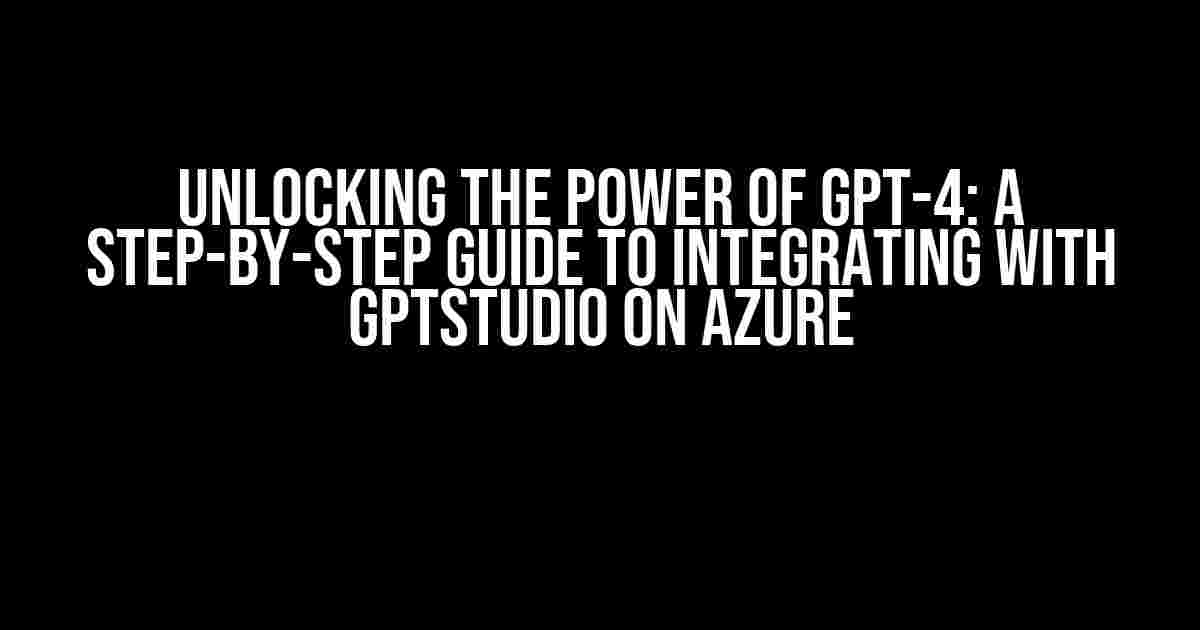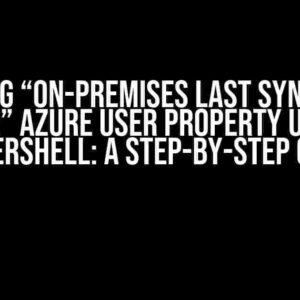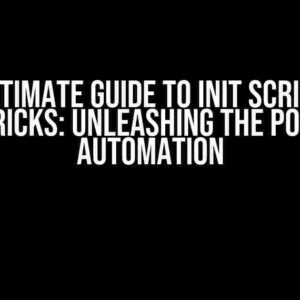Are you ready to tap into the incredible capabilities of the GPT-4 model? Look no further! In this comprehensive guide, we’ll walk you through the process of integrating the GPT-4 model hosted on Azure with the gptstudio package. By the end of this article, you’ll be able to harness the power of GPT-4 to generate human-like text, chatbots, and more.
- What is GPT-4 and why integrate with gptstudio?
- Prerequisites and Setup
- Step 1: Create an Azure Cognitive Services Resource
- Step 2: Deploy a GPT-4 Model on Azure Cognitive Services
- Step 3: Install and Configure gptstudio
- Step 4: Initialize the GPT-4 Model with gptstudio
- Step 5: Use the GPT-4 Model with gptstudio
- Advanced Usage and Tips
- Conclusion
What is GPT-4 and why integrate with gptstudio?
GPT-4 (Generative Pre-trained Transformer 4) is a revolutionary AI model that has taken the world of natural language processing (NLP) by storm. With its unprecedented language understanding and generation capabilities, GPT-4 has the potential to transform industries and revolutionize the way we interact with technology.
gptstudio, on the other hand, is a Python package that provides a simple and intuitive interface for working with GPT-4 models. By integrating GPT-4 with gptstudio, you can unlock the full potential of this powerful model and create innovative applications that were previously unimaginable.
Prerequisites and Setup
Before we dive into the integration process, make sure you have the following prerequisites in place:
- A Microsoft Azure account with a subscription to the Azure Cognitive Services
- A GPT-4 model deployed on Azure Cognitive Services
- Python 3.8 or later installed on your machine
- The gptstudio package installed via pip:
pip install gptstudio
Step 1: Create an Azure Cognitive Services Resource
Log in to your Azure account and navigate to the Azure Cognitive Services dashboard. Click on “Create a resource” and select “Cognitive Services” from the list of available services.
In the “Create a Cognitive Services resource” form, fill in the required details, including the resource name, region, and pricing tier. Make sure to select the “Text Analytics” option under the “Features” section.
Once you’ve created the resource, take note of the resource key and endpoint, which you’ll need later in the integration process.
Step 2: Deploy a GPT-4 Model on Azure Cognitive Services
Next, you’ll need to deploy a GPT-4 model on Azure Cognitive Services. You can do this by creating a new “Language model” resource and selecting the GPT-4 model from the list of available models.
Follow the deployment wizard to configure the model settings, including the input and output formats, and the deployment region. Make sure to select the correct Azure subscription and resource group.
Once the model is deployed, take note of the model ID and deployment region, which you’ll need later in the integration process.
Step 3: Install and Configure gptstudio
Install the gptstudio package via pip: pip install gptstudio
Once installed, import the gptstudio package in your Python script or notebook: import gptstudio as gs
Configure the gptstudio package by setting the Azure Cognitive Services resource key and endpoint using the following code:
gs.config.azure_key = "YOUR_AZURE_KEY" gs.config.azure_endpoint = "https://YOUR_AZURE_ENDPOINT.cognitiveservices.azure.com/"
Replace “YOUR_AZURE_KEY” and “YOUR_AZURE_ENDPOINT” with the actual values from your Azure Cognitive Services resource.
Step 4: Initialize the GPT-4 Model with gptstudio
Initialize the GPT-4 model using the following code:
model = gs.GPT4Modeldeploy_id="YOUR_MODEL_ID")
Replace “YOUR_MODEL_ID” with the actual model ID from your Azure Cognitive Services deployment.
This code initializes the GPT-4 model with the specified deployment ID and sets it up for use with the gptstudio package.
Step 5: Use the GPT-4 Model with gptstudio
Now that the GPT-4 model is initialized, you can use it with the gptstudio package to generate text, chat with users, and more. Here’s an example code snippet that demonstrates how to use the model to generate text:
input_text = "Hello, how are you?" output_text = model.generate(input_text) print(output_text)
This code generates text based on the input prompt “Hello, how are you?” using the GPT-4 model.
Advanced Usage and Tips
Here are some advanced usage tips and tricks to help you get the most out of the GPT-4 model with gptstudio:
| Tips and Tricks | Description |
|---|---|
| Use prompt engineering | Experiment with different input prompts to fine-tune the output of the GPT-4 model. |
| Adjust model parameters | Tweak the model parameters, such as the temperature and top-k filtering, to control the output. |
Use the gs.GPT4Model class |
Take advantage of the built-in functionality of the gs.GPT4Model class to simplify your code. |
| Integrate with other libraries | Combine the GPT-4 model with other libraries, such as TensorFlow or PyTorch, to create more complex AI applications. |
Conclusion
Integrating the GPT-4 model with the gptstudio package on Azure is a powerful combination that can unlock a wide range of possibilities in natural language processing and AI development. By following the steps outlined in this guide, you’ll be able to harness the capabilities of GPT-4 to create innovative applications that were previously unimaginable.
Remember to stay tuned for further updates and developments in the world of GPT-4 and gptstudio, and happy coding!
- Azure Cognitive Services: https://azure.microsoft.com/en-us/services/cognitive-services/
- gptstudio package: https://github.com/gptstudio/gptstudio
- GPT-4 model: https://paperswithcode.com/paper/generative-pre-training-of-transformer-1
This article is optimized for the keyword “How to integrate GPT-4 model hosted on Azure with the gptstudio package” and is designed to provide clear and direct instructions for integrating the GPT-4 model with the gptstudio package on Azure.
Frequently Asked Question
Get started with integrating the powerful GPT-4 model hosted on Azure with the gptstudio package with these frequently asked questions!
What are the prerequisites for integrating GPT-4 with gptstudio?
To integrate GPT-4 with gptstudio, you’ll need an Azure subscription, the GPT-4 model deployed on Azure, and the gptstudio package installed in your Python environment. Additionally, make sure you have the necessary credentials to access your Azure resources.
How do I authenticate with Azure to use the GPT-4 model with gptstudio?
You can authenticate with Azure using environment variables or a credentials file. Set the `AZURE_TENANT_ID`, `AZURE_CLIENT_ID`, and `AZURE_CLIENT_SECRET` environment variables or create a credentials file with the necessary credentials. This will allow gptstudio to access your GPT-4 model on Azure.
What is the correct syntax for loading the GPT-4 model in gptstudio?
To load the GPT-4 model in gptstudio, use the following syntax: `gpt4_azure = gptstudio.load_model(“gpt4″, azure_deployment=True, deployment_name=”your_deployment_name”, resource_group=”your_resource_group”)`. Replace `your_deployment_name` and `your_resource_group` with the actual values for your Azure deployment.
Can I use gptstudio’s built-in functions to generate text with the GPT-4 model?
Yes! Once you’ve loaded the GPT-4 model using the syntax above, you can use gptstudio’s built-in functions to generate text. For example, you can use `gpt4_azure.generate()` to generate text based on a prompt or `gpt4_azure.complete()` to complete a partial sentence. Consult the gptstudio documentation for more information on available functions and parameters.
What are some potential issues I might encounter during integration, and how can I troubleshoot them?
Common issues during integration include authentication errors, model loading errors, and text generation errors. To troubleshoot, check your Azure credentials, ensure the GPT-4 model is deployed correctly, and verify that you’re using the correct syntax for loading and using the model. You can also refer to the gptstudio documentation and Azure documentation for more detailed troubleshooting guides.



